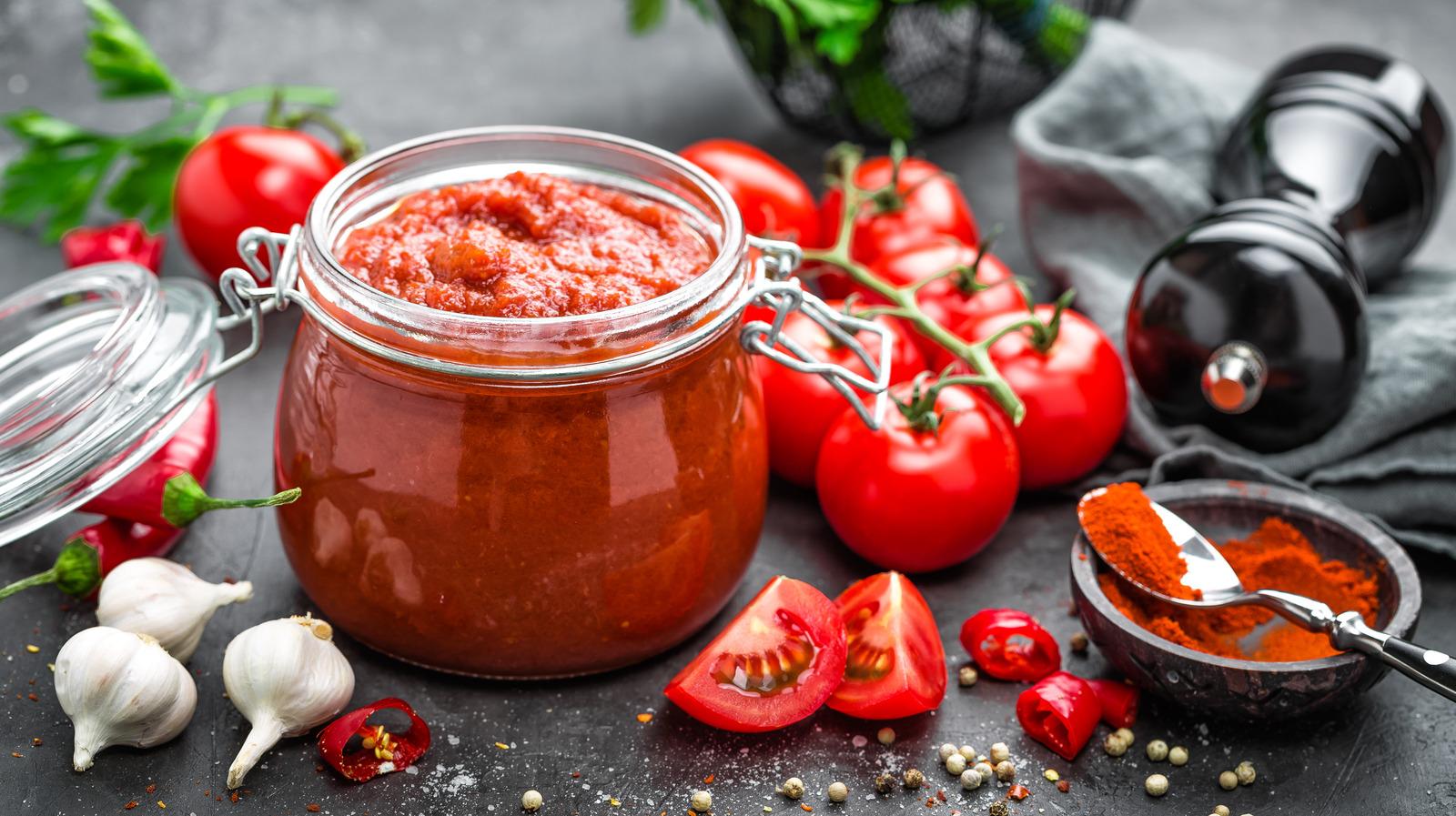Creating a velvety tomato paste at home is one of the most rewarding kitchen experiences for anyone who loves bold, concentrated flavor. Many cooks rely on canned varieties, but making tomato paste from tomatoes you hand-select offers unmatched richness, purity, and freshness. This process transforms simple fruit into a deeply savory ingredient that elevates sauces, soups, braises, and everyday meals.
Below is an in-depth exploration of what gives tomato paste its signature texture, how to achieve it naturally, and why homemade versions stand out in both quality and nutritional value.
Understanding What Makes Tomato Paste Thick and Silky
Tomato paste is essentially tomatoes stripped down to their purest essence. By removing water and intensifying the flesh, the paste becomes a smooth, spoonable concentrate with deep umami notes. Achieving that ideal texture requires a few key steps:
- Selecting the Right Tomato Varieties: Plum or paste tomatoes Roma, San Marzano, Amish Paste contain more flesh and less water. Using these as the base for tomato paste from tomatoes ensures a quicker reduction and a naturally thicker result.
- Proper Slow Cooking: Gentle simmering lets moisture evaporate evenly. This prevents graininess and produces uniform silkiness.
- Straining for Smoothness: A food mill or fine mesh sieve removes skins and seeds, giving the paste its glossy finish.
- Final Reduction: Continued slow cooking concentrates the puree until it becomes thick, spreadable, and richly aromatic.
Why Homemade Tomato Paste Has Superior Texture
Commercial pastes often contain stabilizers or undergo high-heat processing that affects texture. In contrast, making tomato paste from tomatoes at home gives full control over ripeness, acidity, cooking temperature, and consistency.
Homemade paste develops sweetness naturally through slow caramelization. The result is a velvety body, deep red color, and balanced flavor that is hard to match with store-bought options.
Step-By-Step Method for a Thick, Smooth Paste
1. Choose Fully Ripe Tomatoes
Ripe tomatoes provide natural sweetness and enough pectin to help the paste thicken beautifully. Under-ripe fruit tends to produce watery paste and requires longer cooking.
2. Wash, Core, and Chop
Removing tough cores and roughly chopping the tomatoes allows for even cooking. Precision is not crucial since the mixture will be strained later.
3. Cook Gently to Soften
Place the chopped tomatoes in a heavy pot and simmer over medium-low heat. This method breaks them down gradually and preserves flavor while preventing scorching.
4. Process Through a Food Mill
Straining removes seeds and skins, yielding a smooth, silky puree. This creates the foundation of the thick and glossy texture associated with high-quality tomato paste.
5. Reduce Again
Return the strained puree to the pot and cook over very low heat, stirring regularly. As moisture evaporates, the mixture transforms into a dense, rich paste.
6. Finish With Salt and Optional Olive Oil
Salt enhances natural sweetness, while a touch of olive oil adds depth and smoothness. Use both sparingly to let the pure tomato flavor shine.
Texture Tips for Consistently Excellent Results
- Low and Slow Always Wins: High heat produces harsh, burnt flavors.
- Use a Wide Pan: More surface area speeds up evaporation and promotes even thickening.
- Stir Frequently: As the paste thickens, sugars caramelize quickly—stirring prevents sticking.
- Perform the Spoon Trail Test: Drag a spoon through the paste; if it leaves a clear path, the consistency is ready.
These techniques are essential for achieving the desirable scooping texture characteristic of premium tomato paste from tomatoes.
Flavor Enhancements Without Ruining Texture
Subtle additions can enhance complexity without overshadowing the pure tomato flavor:
- A pinch of smoked salt for depth
- A splash of balsamic vinegar for brightness
- A sautéed onion during the early simmer (removed before the final reduction)
- Fresh herbs like basil or oregano, strained out before the last reduction
How to Store Your Tomato Paste
Proper storage protects both flavor and texture:
- Refrigerator: Store in small jars with a thin olive-oil layer to prevent oxidation.
- Freezer: Freeze spoonfuls in silicone trays, then transfer to freezer bags. This keeps tomato paste from tomatoes fresh for months.
- Long-Term Canning: Sterile jars and proper canning methods ensure shelf stability.
Ways to Use Homemade Tomato Paste
This thick, silky paste becomes a powerful ingredient in everyday cooking:
- Enrich stews and braises with concentrated tomato flavor
- Boost pasta sauces with only a spoonful
- Create a caramelized glaze for roasted vegetables
- Add depth to marinades or dressings
- Whisk into soups for body and richness
Because homemade tomato paste from tomatoes is more vibrant and flavorful, smaller amounts go a long way in recipes.
Why Texture Matters
Texture determines how tomato paste behaves in cooking. A thin or watery paste dilutes instead of enriches dishes, while overly dense paste may taste bitter. The perfect texture is thick, smooth, and easily incorporated into any recipe.
This silky finish indicates proper caramelization and natural concentration of flavor—a sign of a well-crafted batch.
Final Thoughts
Crafting tomato paste from tomatoes at home connects you to a culinary tradition built on patience and respect for simple ingredients. With slow cooking, careful straining, and gentle reduction, it becomes a thick, smooth, deeply flavored concentrate unlike anything from a can.
Whether creating small batches throughout the year or preserving large quantities during peak tomato season, the result is a kitchen staple that brings the essence of summer to every dish. The transformation from fresh tomatoes to a rich, velvety paste shows the beauty of traditional cooking and the power of doing things by hand.

